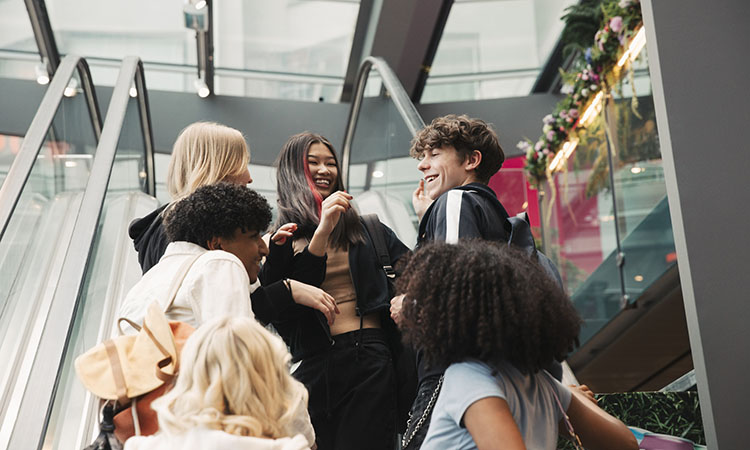
Cue the power walkers and toothpicked orange chicken samples. Everyone is flocking to shopping malls this holiday season!
From teens hanging out with friends to professionals buying into “quiet luxury” trends, in-store retail is attracting consumers across age and income spectrums. But this year’s holiday shopping season may not look like it did in years past.
Here are three ways in-store retail is different this holiday season.
Gen Z is Bringing the Numbers!
They may be the world’s first truly digital natives, but Gen Z (currently aged 11–26) loves shopping in person! According to a June report from Coresight Research, foot-traffic in top-tier malls was up 12% in 2022 compared to before the pandemic. Much of that is thanks to our younger shoppers.
Ninety-five percent of Gen Z-ers reportedly shop online—but 97% also enjoy shopping in person. Researchers with the International Council of Shopping Centers found that young consumers prefer to shop in person for value and convenience. In addition to being able to see, touch, and try the products, in-person shopping allows them to get products immediately and skip shipping costs. Mall shopping also facilitates a richer shopping experience, allowing young consumers to spend time with friends and tap into community.
Inflation is Affecting Spending, but Not in the Way You Think
The big economic factor underwriting all of this year’s stories is inflation. The consumer price index increased 3.1% in November from 12 months earlier, according to the U.S. Bureau of Labor Statistics. The speed of inflation has eased from last year and continues to level out to pre-pandemic levels. But prices of many consumer goods are still moving up, and shoppers have noticed. Many consumers are shopping with price consciousness in mind, looking for big sale days and coupon codes.
Still, consumer spending in 2023 has been strong despite higher prices, higher interest rates, and waning savings. Gas prices are down ahead of the holidays. And workers’ wages are up when adjusted for inflation. Overall, expected spending is still up over last year, though below pre-pandemic levels as many people continue to struggle financially. Retail stores offering smaller ticket items and deep discounts have the best chance of attracting shoppers this year.
Luxury Demand Continues to Soar
On the other side of the coin are high-income consumers. This segment still has plenty of extra savings remaining from during and after the pandemic. And they plan to use it for luxury goods and experiences.
Luxury retail sales in the United States are forecast to exceed $75 billion by the end of 2023, according to a new report by JLL. Many luxury brands have a retail presence in shopping malls alongside “mass market and aspirational retailers like J.Crew and Lululemon”. But today’s luxury retailers are segmenting their consumer approach and doubling down on exclusivity and premium shopping experiences. We’ve said for a long time that customer experience is an important factor in in-person shopping. For no segment is this more true than for luxury shoppers.
Ready to Invest in Retail Real Estate?
Are enclosed shopping malls the best format for your retail business?
NAI Beverly-Hanks continually strives to be the best in the business and provide you with the expertise you need. Contact us today to speak with an NAI Beverly-Hanks agent about finding the perfect retail spaces for your commercial investment goals.